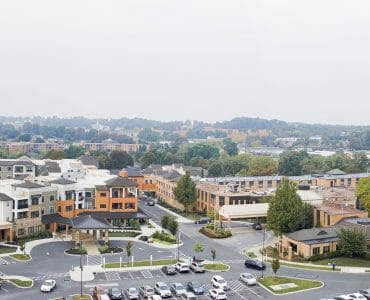Article by: David LaMartina
featured on: ThinkAdvisor.com
President Curt Stutzman is featured in this article below on changes to the aging landscape and looming shortage of caregivers.
As the popularity of professional long-term care services grows among seniors, so does the need for informal assistance from adult children and other family members. According to the Family Caregiver Alliance, 65.7 million Americans , which is 29 percent of the US adult population, are providing care to someone ill, disabled or aged, and 43.5 million of those caregivers are looking after someone 50 or older.
Further, recent AARP statistics show the relative number of available caregivers is dwindling, however. In 2010, there were more than seven potential caregivers for every person in the high-risk, 80-plus year age range. That ratio is projected to fall to as little as four to one in 2030 and three to one in 2050.
Why the sudden shortage? “More people are living longer, and not as many people are going to be in that care-giving age group,” said Curt Stutzman, CEO of Messiah Lifeways, a non-profit that provides a network of services for senior citizens. Pew Research Center statistics indicate that the 65-and-older population will grow from roughly 13 percent in 2010 to 18 percent by 2030, making it the largest and fastest-growing group of senior citizens in US history. “By 2015, the number of people over age 65 is going to be greater than those 15 and under, and that’s not going to change once it happens,” Stutzman added.
The growing senior population isn’t the only factor affecting the potential shortage, either. “Fewer family members are even able to care for their parents, and there’s a more transient population of caregiver age,” said Stutzman. With middle-aged adults working more to make ends meet – often far away from their elderly parents – many seniors won’t have the access to potential caregivers they once enjoyed.
One possible impact of the looming lack of caregivers is that more even more seniors will seek professional long-term care. However, they may do so later in life in attempts to save money and leave more assets to their heirs. “I think you’re going to see people coming more into professional settings, but they’re probably going to be coming in later than 15 years ago because they want to stay in their homes as long as possible,” said Stutzman. “From a financial perspective, they’re not wanting to spend down their dollars until they have to.”
Fortunately, options are expanding for retirees who can’t get care from family members and can’t afford traditional long-term care services. Through organizations such as Messiah, professionals and volunteers are providing adult day care, unskilled in-home care and other services which allow seniors to remain in their homes. And, for situations where family caregivers can’t provide around-the-clock assistance, day centers are springing up around the nation that offer meals and activities during working hours.
Some states are also piloting program that provide compensatory funds to family caregivers, though they’ve received little legislative acceptance and funding thus far. “The reality is that many caregivers are giving up working careers to provide care, and the funding just isn’t there to compensate them for that,” said Stutzman.
Ultimately, a combination of innovative services and careful financial planning will be necessary for most retirees to ensure they have access to needed assistance once their capabilities decline. “The costs of healthcare are and long-term care are certainly rising, and long-term care insurance will be almost a requirement in the near future,” said Stutzman. “Non-for-profits will also look for and recognize there are fewer and fewer people with the assets to provide for residential long-term care.”
For retirees and pre-retirees who might need long-term care, and who have limited access to family caregivers, Stutzman recommends planning and purchasing long-term care insurance policies as soon, while as healthy as possible, when rates are still affordable. Hybrid life insurance policies and plans that provide equal funds for facility-based and in-home care are ideal.
For clients who might become caregivers themselves, he advises they help their parents stay in their own homes as long as possible. “Younger retirees are trying to make their own ends meet, and that’s even more difficult when you have to take care of an older retiree,” he said. “Look at the options and services that be taken into the home and extend the period of time their parents can live on their own.”





